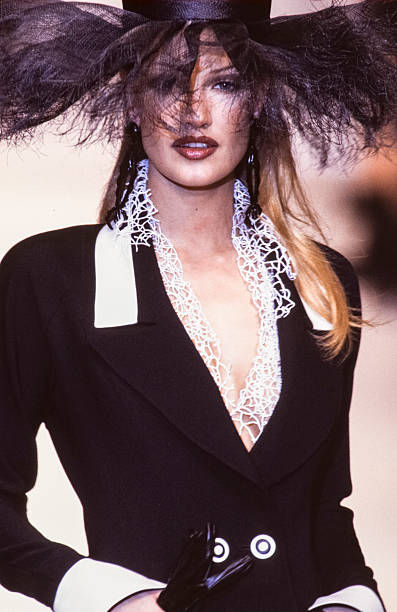It is no question that Karl Lagerfeld was a genius and innovative icon of the fashion world. His robust career spanned over 50 years with impressive reigns at Chanel, Fendi and Chloé, but the designer himself had noted that it was through his namesake collection that he could be most creatively true to himself.
At A Part of the Rest we have taken a focused interest in Lagerfeld's work through his eponymous collection spanning from 1985-1996 and have curated a generous collection of runway styles from the whimsical to the avant garde.
KARL LAGERFELD DRESSES
KARL LAGERFELD TOPS
KARL LAGERFELD BLAZERS and JACKETS
KARL LAGERFELD SKIRTS
KARL LAGERFELD SUITS AND SETS
KARL LAGERFELD JEWELRY
KARL LAGERFELD ARCHIVE
We don’t have any products to show here right now.
ABOUT KARL LAGERFELD
Renowned worldwide for his aspirational, relevant and vanguard approach to style, Karl Lagerfeld was a true icon. He was a force of nature, coupled with an enigmatic persona and an original perspective on fashion and pop culture. In addition to being the creative director of his signature brand, Lagerfeld oversaw the creative direction of the Chanel and Fendi fashion houses. His visionary talent further expanded beyond fashion to include illustration, photography, styling and publishing.
Karl Lagerfeld was born in1933 in Hamburg, Germany, as Karl Otto Lagerfeldt to a wealthy German businessman and a Swedish mother. When Lagerfeld was 14, the family moved to Paris and he was enrolled in the Lycée Montaigne to study drawing and history and it wasn’t long before he found fashion.
In 1954, Karl won first prize in a contest organized by the Secrétariat International de la Laine (International Wool Association), for a sketch of a coat. The coat was produced by Pierre Balmain who offered Karl Lagerfeld, then 17, a job as his assistant. A few years later he became art director for fashion designer Jean Patou. Lagerfeld honed his craft at the house for five years, developing the broad range of skills and aesthetics that would serve him well throughout his career.
He then began working with Chloé in 1964 where he was brought on by founder Gaby Aghion to work alongside a number of other designers. The following year Karl began working for Fendi; their collaboration has continued to the present day.
When his contract at Chloé ended in1983, Lagerfeld signed on as the new creative director at Chanel. Lagerfeld would continue to flourish at the brand for almost four decades, becoming almost as synonymous with Chanel as Coco herself .
While continuing his collaborations with Chanel and Fendi, Karl created his own fashion house, KARL LAGERFELD, in 1984. Offering an edgier, harder look than the luxurious furs of Fendi and the suits and tweeds of Chanel, the Karl Lagerfeld brand, like the man himself, was characterized by lots of black, tightly fitted silhouettes and racier designs. It was an immediate success and, by 1988, a more affordable KL by Karl Lagerfeld line went into production.
Karl went on to receive numerous awards including the Couture Council Fashion Visionary Award from the Fashion Institute of Technology (FIT) in New York. He was also the recipient of the “Outstanding Achievement Award” at the British Fashion Awards and the John B. Fairchild Award by WWD. In 2017, Parisian Mayor Anne Hidalgo presented him with the Grand Vermeil medal following Chanel’s couture show.
Karl Lagerfeld passed away in Paris, France, on February 19, 2019. He was succeeded at Chanel by longtime collaborator Virginie Viard and at Fendi by Silvia Venturini Fendi, formerly creative director of menswear and accessories. The eponymous Karl Lagerfeld brand continues under the design directorship of the Lagerfeld-appointed Hun Kim, who has taken inspiration from an archive of more than 60,000 of the late designer’s photos and sketches.
www.karl.com/experience/us/biography // www.hautehistory.co.uk/karl-lagerfeld/biographies























































































